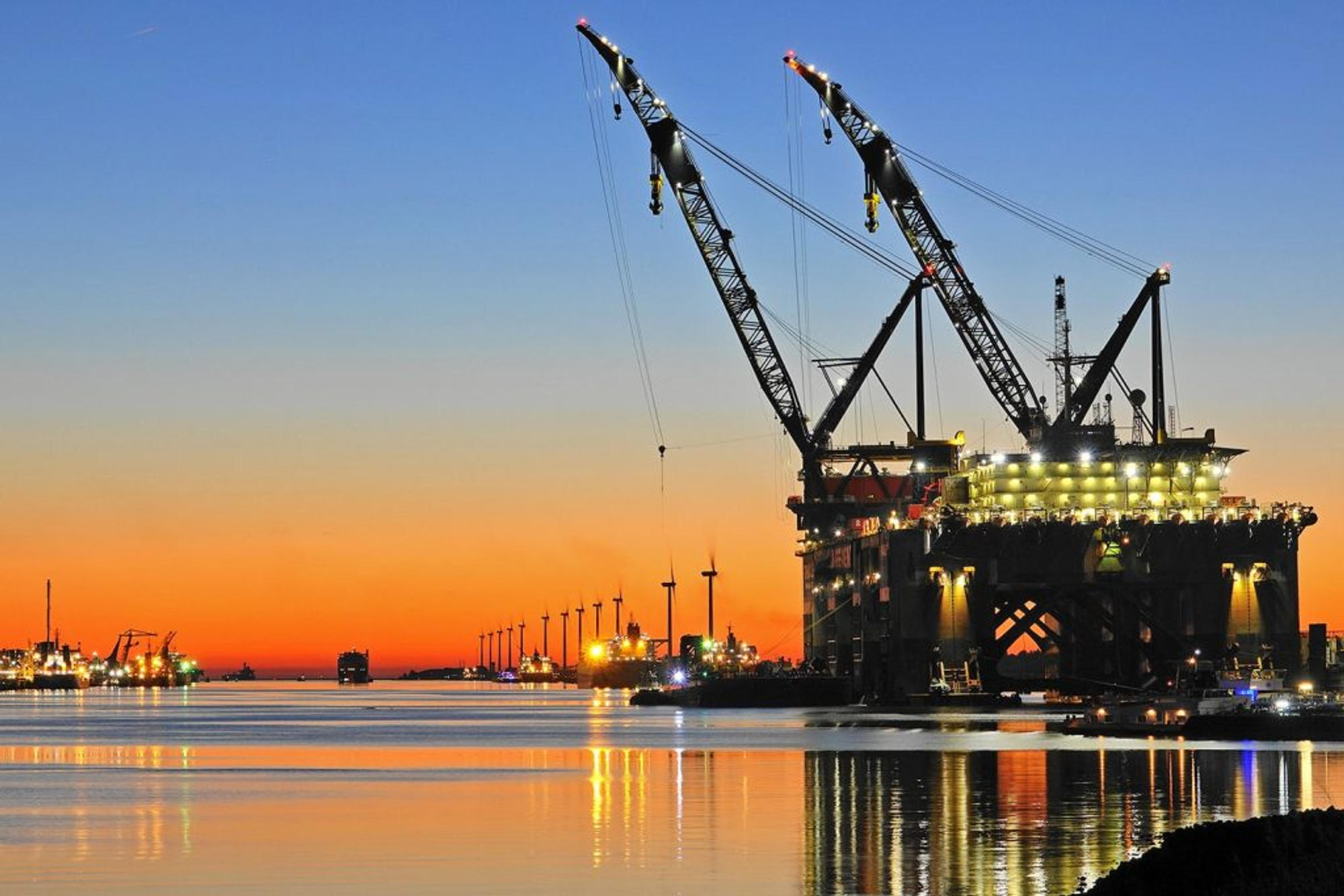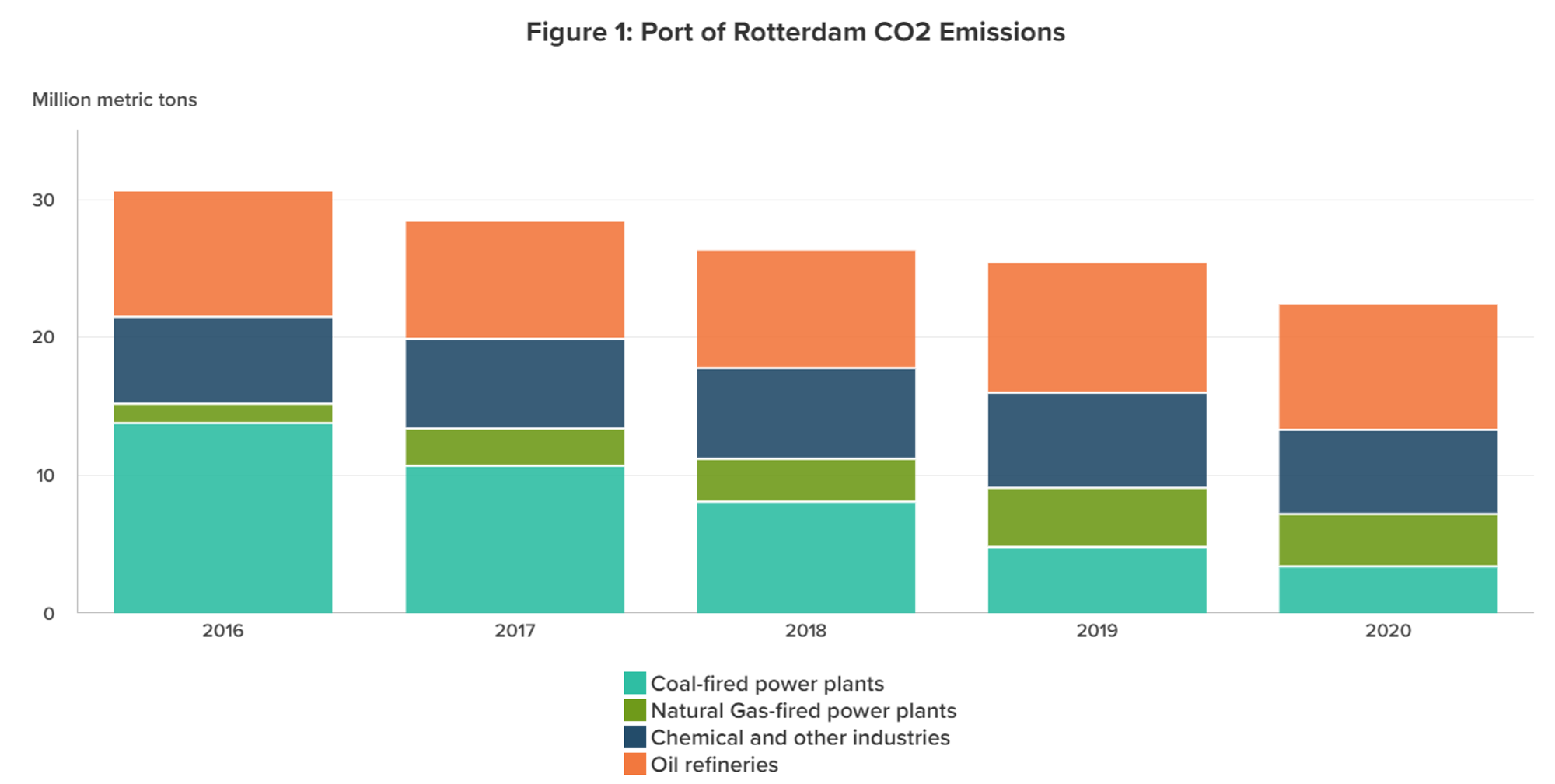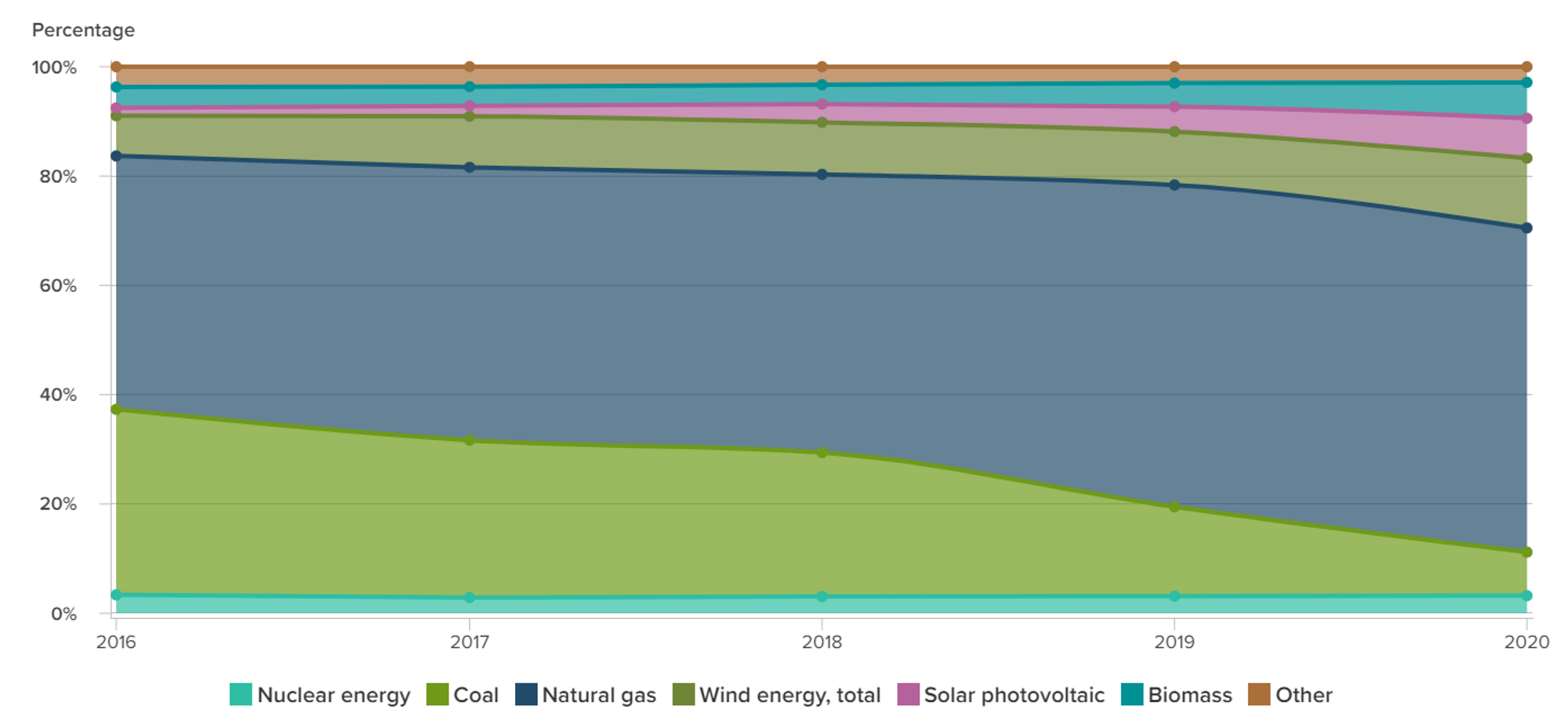
Image by: © Kees Torn
By Peter Engelke and Joseph Webster (March 22, 2023)
Rotterdam’s modest size of about six hundred and fifty thousand residents belies its outsized role as a critical hydrocarbon gateway for the European continent. Not only does the port serve as an entry point for fuels that power much of northwestern Europe, but it also serves as a vast industrial complex featuring multiple power plants that convert incoming fuel to electricity for transmission, and refineries that convert crude oil into fuel and a series of petroleum products that are transported elsewhere in the region.
Rotterdam’s decarbonization strategy is multipronged, technologically oriented, and focused on its port, which contributes to the bulk of the city’s emissions. Rotterdam’s multifaceted strategy includes plans to deploy carbon capture and storage to mitigate the port’s emissions, while also transitioning to greater utilization of clean hydrogen necessary to decarbonize key industrial sectors.

Source: Data from “Carbon Emissions in Port of Rotterdam Crop Swifter than National Average,” Port of Rotterdam.
As shown in Figure 1, the city has made impressive strides in reducing port emissions, from 30.6 million metric tons of CO2 in 2016 to 22.4 million metric tons in 2020, a 27-percent reduction in just four years, far outweighing the 5 percent decline in throughput at the Port from 2016 to 2020.
CO2 emissions reductions can largely be attributed to a decline in the use of coal-fired power.
2016 to 2020 witnessed a 75 percent drop in coal-related emissions, a decrease of more than 10.4 million metric tons.

Source: Electricity Balance Sheets
Solar and wind power constituted nearly 20 percent of the Netherlands’ electricity generation in 2020, up from 9 percent in 2016. As a percentage of overall consumption, renewable energy’s growing share of electricity generation is displacing hydrocarbons, particularly coal.
Comparing with Singapore

- Generation comes mostly from gas/LNG, which caused the wholesale prices to almost double in 2022
- Demand will grow by 2.2% a year in 2022-26
- Solar expected to account for more than 70% of the new capacity additions over this period